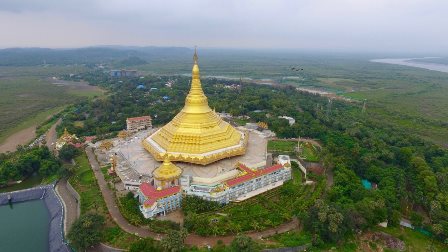The following has been adapted from Sayagyi U S.N. Goenka’s discourse during the Satipatthāna course:
There are seven bojjhangas (factors of enlightenment) that have to be developed to reach the final goal of full liberation.
They are:
1. sati (awareness);
2. dhamma-vicaya (investigation of Dhamma);
3. viriya (effort);
4. pīti (rapture);
5. passaddhi (tranquillity);
6. samādhi (concentration, absorption) and
7. upekkhā (equanimity).
The first bojjhanga is sati, awareness. Without it, further steps on the path cannot be taken.
Sati, the objective observation of reality, is the most important factor because Sati must be continuously present from moment to moment with every other factor.
Dhamma-vicaya is the second bojjhanga. The word caya or cayana means “to integrate.” Apparent, consolidated, integrated, illusionary truth creates delusion and confusion resulting in wrong decisions and actions.
Dhamma Vicaya or vicayana means to divide, dissect, disintegrate, separate, which is what Vipassana intends you to do.
Initially dhamma-vicaya is intellectual. The body is analyzed as just four elements, with no “I” about it. The mind is just the four aggregates. One observes the six sense doors, their respective objects, the contact of the two and the process of multiplication. The intellectual clarity gained by this process gives guidance to start the actual practice of Vipassana and study the truth at the actual level. To become a factor of enlightenment, dhamma-vicaya must become an experiential investigation—direct experience of the phenomenon of arising and passing away at the level of sensation.
The third bojjhanga is viriya (effort) as in sammā-vāyāmo in the Noble Eightfold Path.
Great effort is required, but the effort is not to react, to let things just happen. Even if you have been victorious in a thousand battles against a thousand warriors, this inner battle of non-reaction is more difficult because the old habit is to do something, to react.
Some pressure is necessary to drill a hole in a precious gem, but too much pressure will break it. It is a middle path.
As you keep practicing with sati, dhamma-vicaya, and viriya, the impurities go away...
for full article: The Factors of Enlightenment (Bojjhangas)


